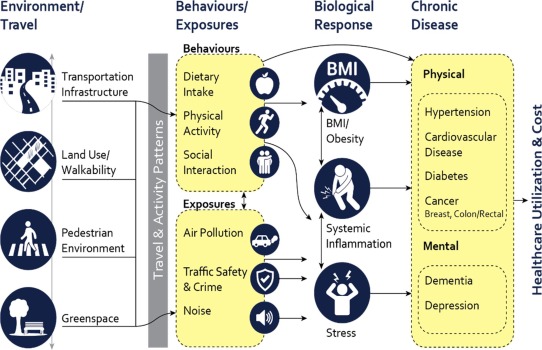Diabetes is a widespread disease that affects millions of people around the world. It is influenced by factors such as genetics, lifestyle, and environment. As the number of cases continues to rise, it's important to understand how we can modify our environment to reduce the risk of diabetes.
This study looked at how features of our neighborhoods, like walkability and parks, might be connected to diabetes rates and two major risk factors: physical activity and obesity.
Physical inactivity and obesity are linked to the increasing rates of diabetes. Being physically inactive can lead to a higher risk of early death and other health problems, including diabetes and obesity. Obesity is influenced by a variety of factors, including physical inactivity, genetics, and other health-related issues. It can lead to a decreased quality of life and contribute to diabetes, cancer, and heart disease.
Research has found that walkable neighborhoods with more parks are associated with increased physical activity, lower obesity rates, and fewer cases of diabetes.
The study found that people living in walkable neighborhoods with more parks had lower rates of diabetes. These areas were also linked to higher levels of physical activity and lower rates of obesity. However, the impact of physical activity on diabetes rates was small compared to the influence of obesity.
These findings suggest that investing in walkable neighborhoods and public transportation infrastructure can help create healthier communities. By changing zoning laws and planning regulations, we can develop more compact, mixed-use environments with access to parks and high-quality transit services.
Future research should look at the costs and benefits of these investments to make better decisions for building healthier cities.
Behaviours and exposures and subsequent biological responses mediate the relationship between the built and natural environments and chronic disease

Source: Frank, L. D., Iroz-Elardo, N., MacLeod, K. E., Hong, A. The pathways from built environment to health: Connecting behavior and exposure-based impacts. 2019. Journal of Transport and Health.
Frank, Lawrence D et al. “Chronic disease and where you live: Built and natural environment relationships with physical activity, obesity, and diabetes.” Environment international vol. 158 (2022): 106959. doi:10.1016/j.envint.2021.106959
Under a Creative Commons License